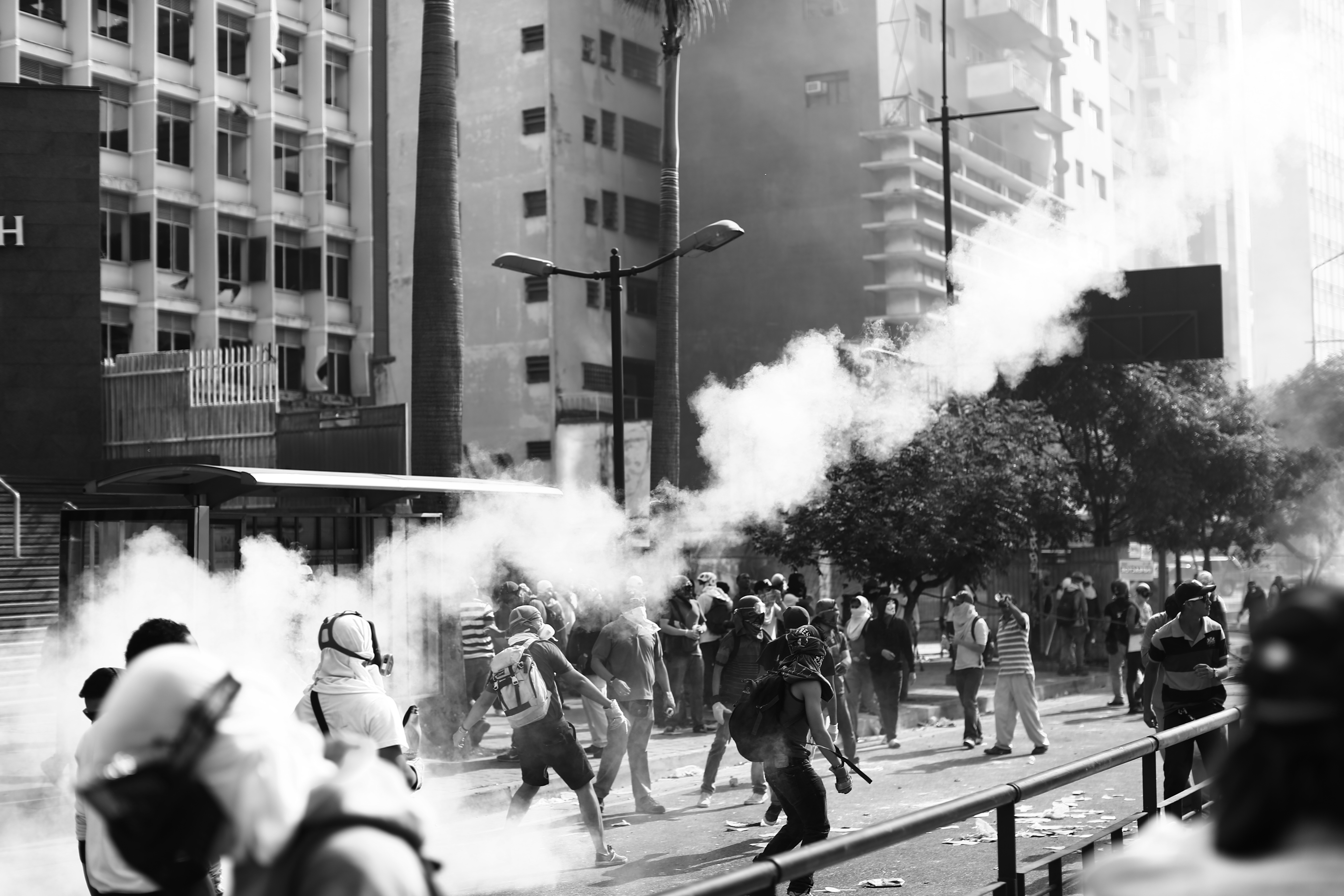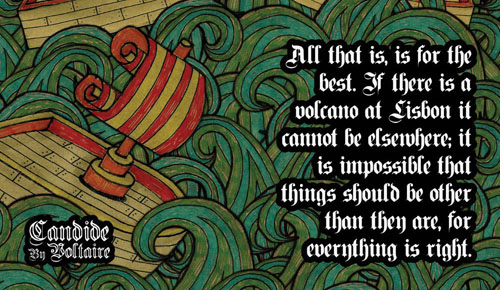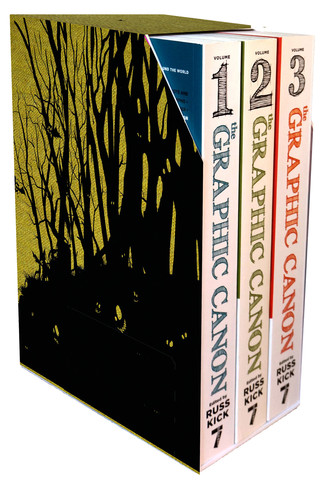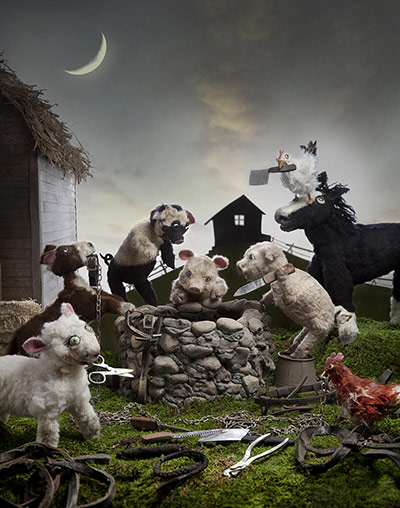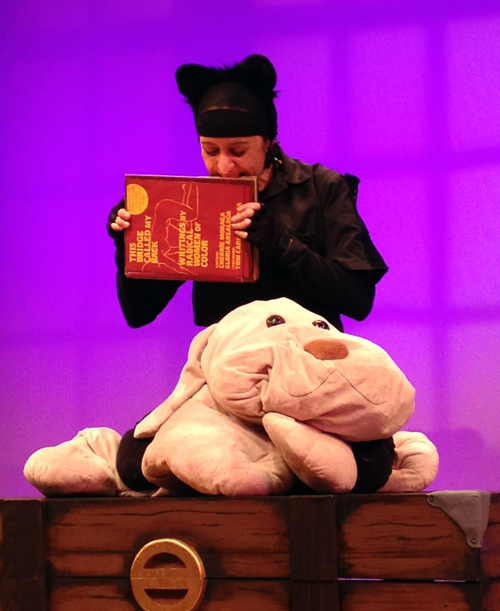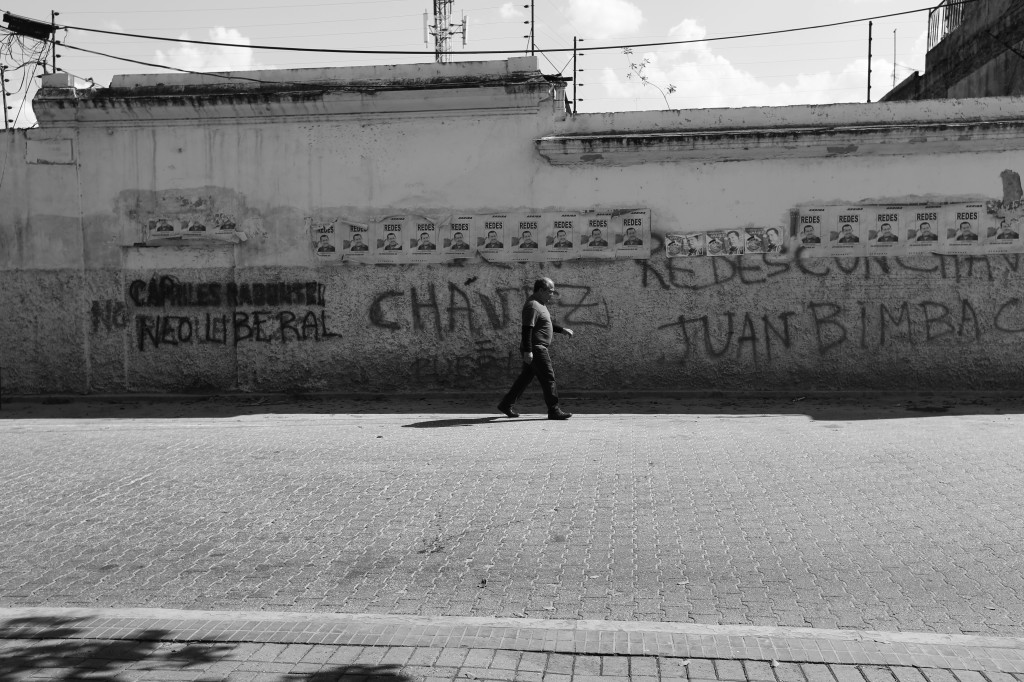
Armored vehicles roll down the street, ringed by dozens of police in riot gear. Further down on the palm tree-lined Avenida Francisco Miranda, one of Caracas’s main arteries, small groups of protesters clad in bicycle helmets and gas masks arm themselves with stones and hastily construct roadblocks with whatever they can find: sign posts, bits of concrete, a steel cable taken from a nearby construction site. Bags of garbage burn nearby, spewing black smoke into the air. Though it’s early on a weekday afternoon, the storefronts that line the normally busy street have already been shuttered, antigovernment graffiti scrawled on their windows and walls. A crowd of several hundred people—a mixture of peaceful demonstrators and onlookers from nearby businesses—clank guardrails amid shouts of “Resistencia!” and “Libertad!”
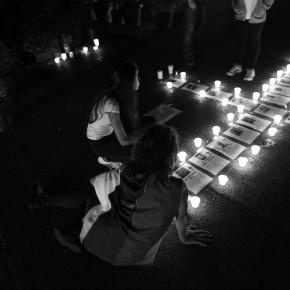
Slowly at first, the police lob tear gas canisters into the crowd. Protesters quickly pick them up and cast them away. Then the canisters start raining down, scattering nearly everyone. Crates full of rocks and bottles and containers filled with gasoline appear suddenly among the demonstrators. Someone hurls a firebomb, which explodes underneath a contingent of about six officers, who, seemingly unscathed, continue advancing. Marching in rows through the choking fog, the police start aiming their tear-gas guns directly at the protesters still gathered on the street. A group of teenage boys break into a furious sprint as police on motorcycles hurtle down the sidewalks after them. One of the boys, shaking with fear, frantically jabs at apartment buzzers as a group of workers nearby shout, “Let him in! Let him in!” He slips inside the apartment building’s steel gate, just out of an officer’s reach.
The April 1 demonstration in the Venezuelan capital of Caracas—a protest march that swiftly descended into an armed brawl with security forces sent out to clear the streets—is one of dozens that have taken place this year, fueling a major popular uprising against the regime of Venezuelan president Nicolás Maduro. Since February, forty-two people have died, though the violence has tapered off in recent months. The fatalities have included both opponents and supporters of the government: José Guillén Araque, a thirty-four-year-old National Guard captain and father of two teenage daughters; twenty-two-year-old beauty queen Génesis Carmona; Adriana Urquiola, twenty-eight years old and five months pregnant; and many others, drawn from all parts of Venezuelan society.
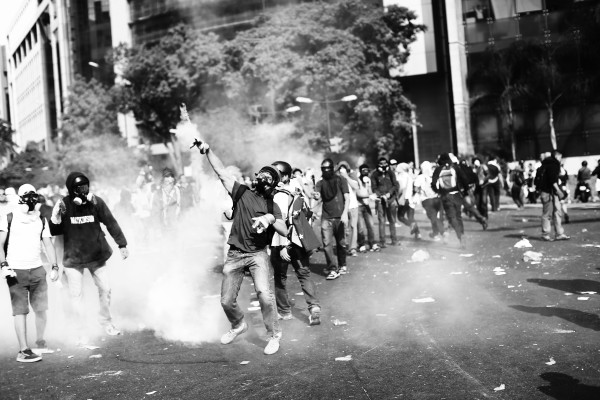
As in many of the popular uprisings that have broken out in places like Syria and the Ukraine in recent years, repressive tactics intended to quash the protests have only served to inflame them. And as they have elsewhere, Venezuela’s artists have been a driving force within the opposition movement, crafting a compelling narrative to motivate resistance.
Since the killings began, street artists have memorialized the dead in spray paint, tagging walls and sidewalks throughout the city with their faces and names. “[The government] has all the power. They do whatever they want, and they are extremely violent,” says Marina, a twenty-seven-year-old English teacher and a member of anti-Maduro student artist collective called Stencil Resistencia. (Because of fear of government reprisals, the protesters I spoke to asked me to withhold their last names.) “That’s the idea of painting the faces of the dead, to remind everyone of who we are dealing with. They are the violent ones.”
The demonstrations began in February, over local issues. College students in the western city of San Cristóbal turned out to protest a sexual assault that had occurred on campus. The resistance quickly snowballed into a national movement. Angered and aggrieved, thousands of Venezuelans have taken to the streets since then to decry the government’s failure to deal with a raft of problems.
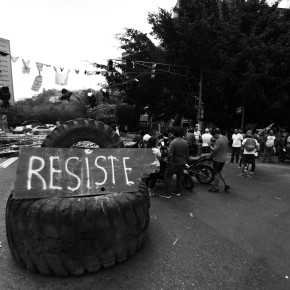
Despite having the world’s largest proven oil reserves, Venezuela has struggled economically, and in the past two years its fiscal woes have reached crisis levels. During his fourteen years of increasingly unrestrained rule, the late president Hugo Chavez succeeded in rearranging the country’s power structure and lowering the poverty rate, mainly by allocating more of the country’s oil wealth to programs for the poor. But he also left the legacy of an isolated and sputtering economy, as well as a byzantine currency-control system under which, critics say, tens of billions of dollars in public funds have gone missing.
Today, the country consistently ranks near the bottom of global measures of freedom of the press and the ease of doing business. It boasts one of the highest inflation rates in the world—more than 60 percent annually—as well as an increasingly exorbitant cost of living. Basic necessities like toilet paper, cooking oil, and flour, nearly all of which are imported, have become scarce. Alarmingly, the number of murders has also surged over the past decade: according to the United Nations, Venezuela now has the second-highest murder rate in the world.
Meanwhile, government repression of dissent has been at times brutal. The first protester fatality occurred on February 12. Bassil Alejandro Dacosta Frías, a twenty-three-year-old carpenter, left his home in the nearby city of Guatire to join two of his cousins in a protest march in Caracas. An estimated 10,000 people took to the streets that day. In a scene that would become familiar, the demonstration ended in chaos. Once the police came out in force, most of the protesters filtered out into nearby streets, but small groups stayed behind or were diverted by the security forces.
In the confusion that ensued, at least one member of the security forces opened fire into the crowd, using live ammunition. The protesters fled. A video released later showed Dacosta running and then falling to the sidewalk, struck from behind by a bullet to the head. (A forty-two-year old member of Venezuela’s national intelligence agency is now in jail awaiting trial for firing the fatal shot.) The night before he was killed, Dacosta announced on Facebook that he was going to “go out and march tomorrow without fear of anything, with the hope of finding a better future.”
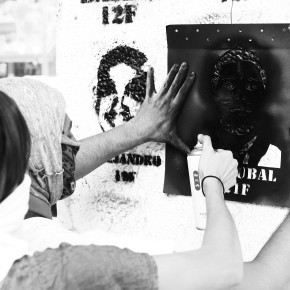
In the weeks that followed, the country’s fractured politics continued to play out bloodily on its city streets, with dozens more dying in the violence. Remembering the dead became an act of resistance that united the opposition. In the outpouring of emotion following Dacosta’s death, his face became ubiquitous, popping up on T-shirts and placards, painted onto walls and sidewalks.
The activists I interviewed have helped blanket the city with his likeness, along with those of the unrest’s many other victims. “These people who died gave their lives for the country. We must not forget them,” says Alejandro, a twenty-five-year-old economics student who has dedicated much of his free time since the protests began to the opposition movement. Using digital photos published in local media and shared on social networks, he and other artists create images in Photoshop that are then cut into stencils and spray-painted onto surfaces.
Antigovernment street art carries with it some irony in Venezuela. Chavez popularized graffiti and murals as political statements, and the government still hires artist collectives to work on public projects, which often carry strong anticapitalist and anti-American messages. Chavez often mocked the highbrow sensibilities of Venezuela’s elite and sought to empower the country’s poor by celebrating their culture. But now the government-sponsored street art has become an institution as well as a propaganda tool. After his death, Chavez’s image has become omnipresent, with his face, his recognizable signature, and even his eyes occupying the sides of buildings and billboards. In Caracas, the writing on the wall is usually a good indicator of whether you are walking through an opposition or government stronghold.
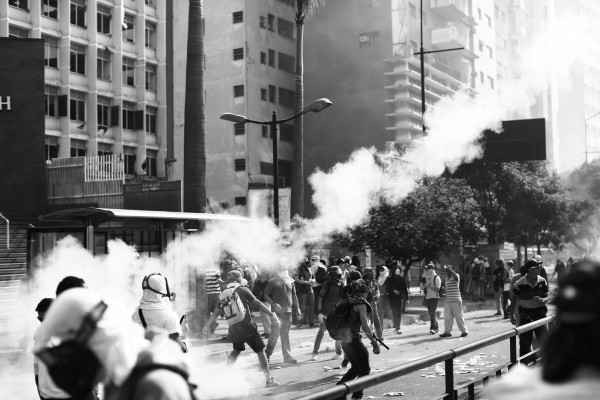
The government has also organized marches of its own and rallied an army of pro-government musicians and street artists to its side. They depict a world dominated by Yankee imperialists, allied with Venezuela’s wealthy elites, who threaten to subjugate the poor. With America’ record of meddling in the affairs of Latin American countries, Venezuela’s history of entrenched inequality, and the country’s persistent political instability—punctuated by upheaval and coups—this message resonates with the government’s supporters, who have vowed to continue the populist political agenda championed by Chavez, who died in 2013 after a prolonged fight with cancer.
Since he took office, Maduro—Chavez’s handpicked successor and the leader of the country’s ruling socialist party—has drawn heavily from his predecessor’s playbook. He has claimed to be the target of frequent coup attempts and made vague accusations of interference from US-backed militants. Amid the recent wave of protests, the president, his supporters, and the state-run media have sought to portray the opposition as bent on conflict and destruction. (Maduro has even taken to calling the protesters “Chuckies,” in reference to the ginger-haired, knife-wielding doll of 1980s horror-movie fame.)
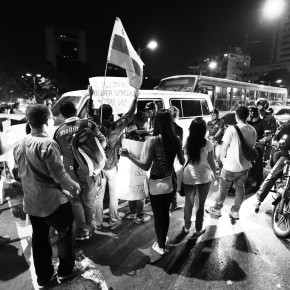
Government forces have come under gunfire in several of the confrontations, and the protesters have on numerous occasions tussled with them and set fire to buildings and vehicles. Because of the international media’s focus on the street battles that have led to deaths like Dacosta’s, masked young men have come to symbolize Venezuela’s protest movement to the outside world, even though their groups generally number in the dozens, compared to the thousands of peaceful demonstrators who turn up at major opposition marches and rallies. The protesters—many of them in their teens and early twenties—complain, in turn, about the police’s heavy-handed tactics, which they say are employed even when the demonstrations are nonviolent. (A number of protesters claim the police often incite the violence and viciously beat them even when they do not resist arrest.) Images purporting to show the bloodied and bruised bodies of demonstrators circulate widely on Twitter and other social media networks, fueling the outrage.
The government has deftly used the street skirmishes to justify its crackdown. Maduro recently vowed to bring to justice “criminals who seek to fill our country with chaos and violence.” In May, his forces raided a protest camp outside of the UN office in Caracas, even as the government engaged in internationally mediated peace talks with the opposition.
More than 3,000 people were detained in connection with the protests earlier this year, according to the Venezuelan NGO Foro Penal Venezolano; seventy-five remain jailed today. The group also says it has documented instances of beatings and torture. Beyond its violent crackdowns on demonstrations, the government has hounded opposition politicians and media outlets that it accuses of fomenting the hostilities. In June, images of Leopoldo Lopez, the former mayor of the Chacao district in central Caracas and the government’s most famous prisoner, were leaked, showing him bearded and gaunt after spending more than a hundred days in detention under charges of instigating violence and damaging property. (With his pugnacious rhetoric and overt support of the fighting in the streets, Lopez played a critical role in sparking the protest movement.) Lopez’s trial finally began in late July. His lawyers say he could face up to ten years in prison if convicted.
The April 1 protest in Caracas was set in motion by Maria Corina Machado, another vehement critic of the Maduro government, who urged her supporters to come out for a political rally and march. Machado had just been accused of treason and ousted from her seat in Venezuela’s parliament after denouncing, at a Washington meeting of the Organization for American States, human rights abuses allegedly committed by the regime. (In Venezuela Machado is a controversial figure, whose political organizations have in the past received financing from the US government. The government has long called her a puppet of the Americans, and in late May she, the US ambassador, and several other opposition politicians were publicly accused of organizing an assassination plot against President Maduro.) Thousands turned up to hear her speak at a plaza in downtown Caracas, but when it came time for the symbolic walk to the steps of the National Assembly, many of the demonstrators found themselves face-to-face with police and National Guard troops, who shut down metro stations and blocked major avenues.
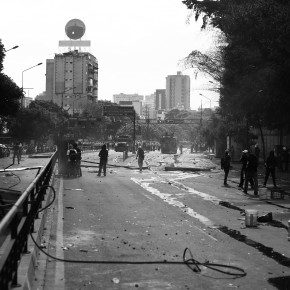
While they don’t agree with using violence, the protesters I spoke to see the street demonstrations as a necessary and effective tactic. Instead of addressing the country’s problems, they say, the government has marginalized legitimate political dissent and attempted to silence criticism. Beyond their hostility to the government, however, the protestors have little in the way of a unified agenda. Their demands range widely—from moderate policy reforms to regime change.
Like many middle- and upper-class Venezuelans, the activists I interviewed complain that their day-to-day lives have rapidly deteriorated over the past few years, as crime has grown and the economy worsened. “The situation is as bad as it’s been in the past fifteen years,” said Alejandro, the economics student. “The [government] officials can’t go on denying the weakest currency in the world, the lowest minimum wage in the world. We are demanding a change—not necessarily in the government, but in the policies that they are carrying out.”
With the potent symbolism of their street graffiti, artists like Alejandro have helped the dead protesters achieve a near-mythic status in Venezuela. Sympathizers often refer to them as “los caídos,” or the fallen ones. Even as tensions in the street have calmed in recent months, with no new deaths being reported, the activists say their acts of remembrance will go on. “We have to continue struggling,” says Marina. “If we go back to our daily lives, they will have died in vain.”
J. J. Gallagher is a freelance writer based in New York. Twitter: @jayjgal
- Follow us on Twitter: @inthefray
- Comment on stories or like us on Facebook
- Subscribe to our free email newsletter
- Send us your writing, photography, or artwork
- Republish our Creative Commons-licensed content

